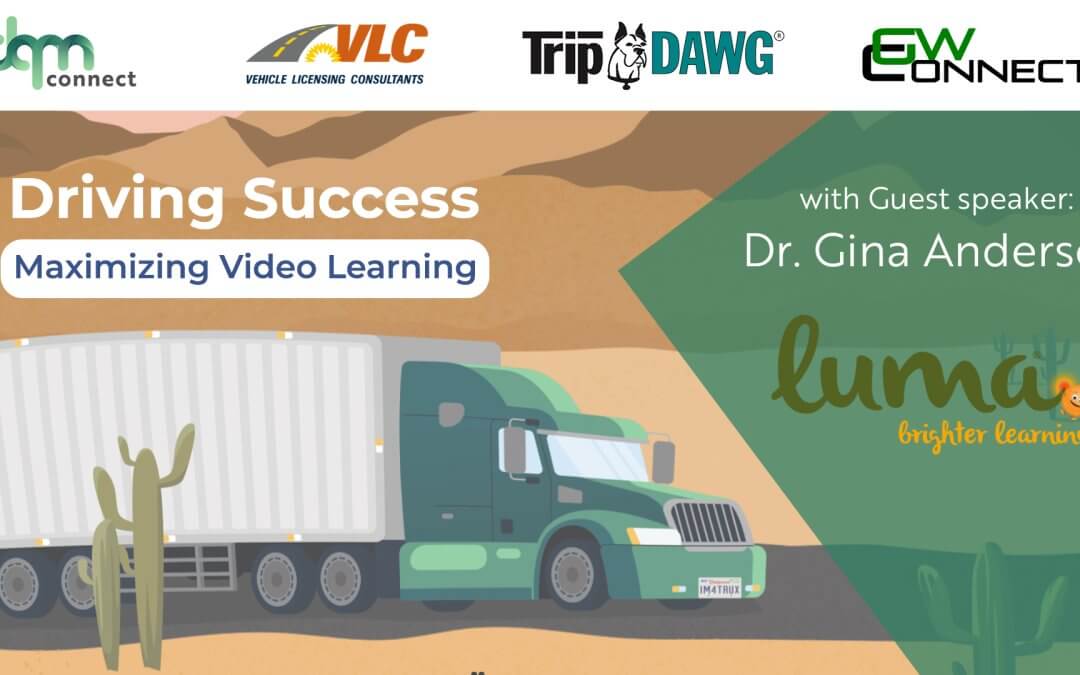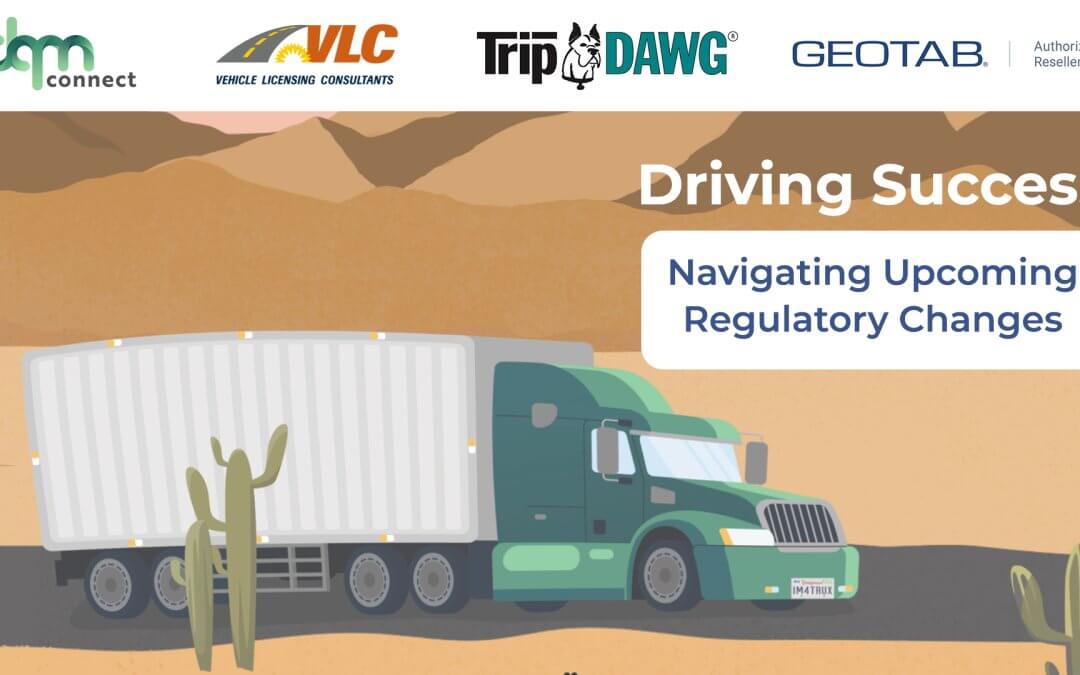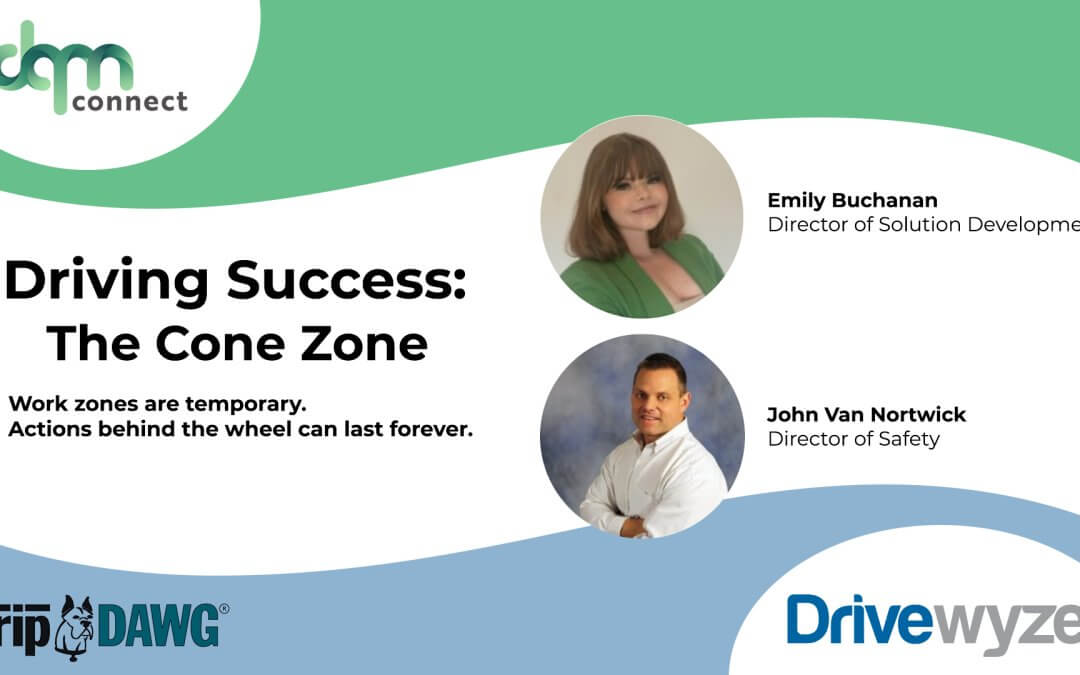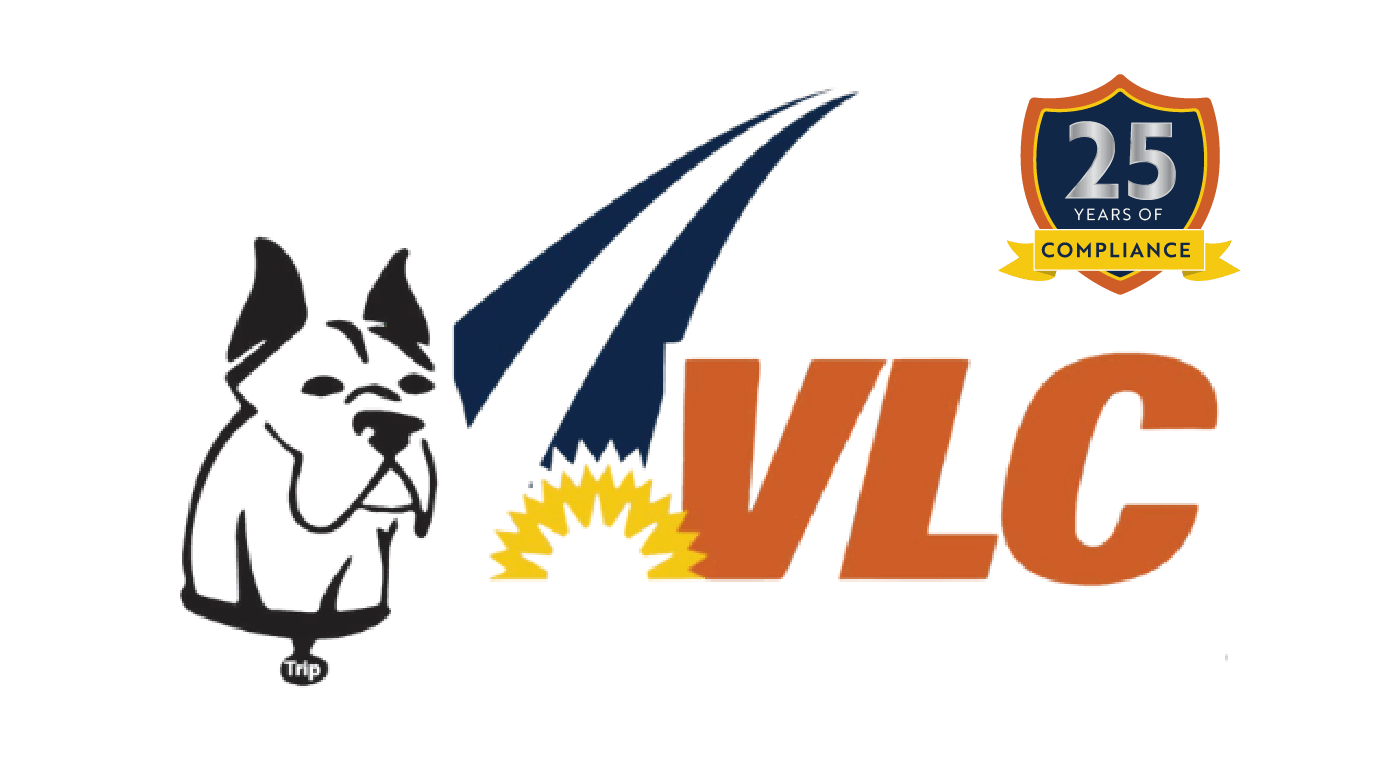
Driving Success Webinars
Geotab Data Processing: Turning Telematics Into Actionable Insights
Geotab data processing is transforming how fleets operate. Every day, Geotab processes more than 75 billion data points. This massive stream of telematics information helps businesses make faster, smarter decisions in real time.
Smarter Compression, Sharper Accuracy
Geotab uses a specialized algorithm to compress telematics data while preserving accuracy. Instead of recording everything, the system identifies and focuses on the most meaningful events—so you get high-impact insights without information overload.
Geotab Active Insights and Telematics Tools
Geotab’s platform goes beyond just tracking location. Its AI-powered collision detection analyzes crash severity, helping companies assess incidents and improve safety protocols.
Integrated telematics and camera systems monitor driver behavior, including:
-
Speeding
-
Hard braking
-
Harsh cornering
-
Seatbelt usage
These tools give fleet managers a full picture of what’s happening behind the wheel.
The Value of Geotab’s Data Collection
Geotab collects detailed information on:
-
Underused assets
-
Predictive maintenance issues
-
High-risk driving behaviors
-
Hours of Service (HOS) violations
In a pilot involving 22 vehicles, one fleet using Geotab was found to be 78% safer than comparable heavy-duty fleets.
Murdoch Fleet’s Transition to Geotab
Murdoch Fleet Operations hauls heavy materials to construction sites and major retailers like Lowe’s and Home Depot. With a decentralized fleet model, their trucks are parked at customer sites, not a central yard.
Murdoch made the switch to Geotab after drivers expressed frustration with their old system. The intuitive interface and driver-friendly design of Geotab’s new platform, Zen, made training and adoption easier.
Real Safety Improvements with Geotab
After adopting Geotab:
-
Speeding violations dropped from 100 per week to 50–60
-
Seatbelt violations dropped to zero
-
Drivers are now rewarded for safe behavior
-
Tracking driver logs is faster and easier
The ZenU maintenance program helped the fleet better manage repairs and technician routes. It also caught tire issues early, reducing costs and improving uptime.
Geotab Keeps Fleets Compliant
Murdoch Fleet now stays compliant with ELD regulations, thanks to Geotab’s smart logging features and training support. Drivers receive video tutorials, and fleet managers benefit from real-time visibility into violations and performance trends.
Planning for the Future with Telematics
With rising fuel costs and a rapidly changing market, Murdoch is now using Geotab data processing to manage expenses and adapt to post-pandemic challenges. This approach helps them maintain efficiency while prioritizing driver safety.
Join Geotab Connect
Mark your calendar: Geotab Connect returns February 25–27 in Orlando. The event will feature hands-on training, new product launches, and updates to the Hours of Service dashboard.
Don’t miss the next educational webinar on drug and alcohol testing, coming next month. These sessions help fleets stay ahead of DOT compliance rules.
Ready to take your fleet’s performance to the next level?
Explore Geotab or contact us to see how smart data processing can boost safety, compliance, and ROI.

Driving Success Webinars
FMCSA Driver Qualification Files: What You Need to Know to Stay Compliant
Any driver with a commercial driver’s license (CDL) who operates a commercial motor vehicle must have a Driver Qualification (DQ) file. The FMCSA driver qualification file is a legal requirement and plays a critical role in your company’s safety, compliance, and performance record.
What’s in an FMCSA Driver Qualification File?
A DQ file contains key onboarding, eligibility, and safety documents for each driver. These include:
-
Application for employment
-
Driving record (MVR)
-
Road test certification or equivalent
-
Medical certificate
-
Safety performance history
-
Drug and alcohol testing records
According to FMCSA regulations, companies must keep onboarding documentation for at least three years. These records prove that your hiring process complies with federal standards. Some documents, like safety history or road test forms, may need to be retained for longer.
Why FMCSA Driver Qualification Files Matter
Maintaining accurate DQ files isn’t just about passing audits. It’s about ensuring every driver is safe, qualified, and ready for the road. These records impact your CSA scores and can affect your business reputation, insurance rates, and even your ability to operate.
Non-compliance could result in:
Driver Monitoring and Ongoing Compliance
Compliance doesn’t end at onboarding. Companies must also:
-
Pull and review each driver’s Motor Vehicle Record (MVR) at least once a year
-
Conduct a Clearinghouse query annually to check for drug or alcohol violations
-
Perform random drug testing on 25% of their active drivers
-
Address driver violations immediately to avoid escalation
Poor communication between departments often leads to unaddressed violations. These gaps increase your risk of non-compliance and penalties.
Best Practices for Managing FMCSA Driver Qualification Files
To stay audit-ready and reduce risk, carriers should:
-
Conduct regular internal audits
-
Use compliance management software
-
Track documentation and renewal dates
-
Participate in driver monitoring programs
-
Train staff on FMCSA requirements
By following these best practices, your company can stay organized, proactive, and compliant.
Don’t Miss Our Next Webinar
Join us for our upcoming session featuring a guest speaker from Geotab to discuss Hours of Service (HOS) and how it connects to driver compliance and qualification management.
Need help managing FMCSA driver qualification files?
Contact us or check out DQM Connect to streamline your driver file management and stay audit-ready.

Driving Success Webinars
Vehicle Maintenance Violations: What Fleets Need to Know
Failing to maintain your fleet properly can cost your company—big time. Vehicle maintenance violations are among the most serious issues regulated by the Federal Motor Carrier Safety Administration (FMCSA). These violations can lead to steep fines, lost time, and increased scrutiny.
The High Cost of Poor Maintenance
If you don’t regularly inspect, repair, and maintain your vehicles, you could face FMCSA fines ranging from $4,000 to $221,000. That’s just for general violations. Failure to keep accurate maintenance records may lead to fines between $900 and $7,000. Operating a vehicle that has been declared out-of-service? That brings additional penalties and immediate compliance concerns.
The message is clear: consistent vehicle maintenance isn’t optional—it’s a federal requirement.
Driver Qualification Management Made Simple
In addition to vehicle upkeep, driver qualification management is critical. DOT-regulated drivers must undergo pre-employment and random drug and alcohol testing. Employers are also required to maintain Motor Vehicle Reports (MVRs) on file for each driver.
That’s where DQM Connect comes in. This powerful platform simplifies driver file management, hiring, renewals, and audit prep—all while keeping your fleet compliant.
Comprehensive Fleet and Compliance Solutions
Several partners help businesses stay on track:
-
Gateway Connect supports fleet management, vehicle renewals, permits, and DOT reporting.
-
Evolution Consulting offers DOT-compliant services including drug and alcohol testing, safety verifications, and MVRs.
-
Luma Learning provides interactive training programs designed specifically for drivers and administrative staff.
Together, these services help minimize risk and ensure you meet FMCSA standards.
DOT-Regulated Testing and Compliance Services
Evolution Consulting is a trusted provider of DOT-regulated services. They help carriers implement random drug and alcohol testing programs and offer complete safety verification solutions. Integration with driver qualification systems makes it easy to stay on top of compliance.
Training That Sticks with Your Team
Luma Learning understands how the brain retains information. Their training programs are engaging, science-backed, and customized for the transportation industry. From new driver orientation to admin staff refreshers, Luma keeps learning simple, effective, and memorable.
Avoid costly vehicle maintenance violations.
Learn more about DQM Connect or contact us to see how we can support your fleet’s compliance, safety, and success.

Driving Success Webinars
Best Practices for Video Learning: How to Create Content That Sticks
In today’s fast-paced digital world, video learning has become a go-to method for training and development. Everyone on a recent call confirmed they are using video to train their teams. These training videos are short, upbeat, and designed to be engaging—usually capped at just 8.5 seconds.
That strict time limit is not random. It reflects growing awareness about how people learn best through video.
What the Research Says About Video Learning
A key study revealed that effective video content must feel authentic and connect directly to a specific skill or piece of information the viewer needs. However, many participants found the videos they were shown to be too long, outdated, and irrelevant. Engagement was low, and learning outcomes suffered.
These insights underscore the importance of applying the best practices for video learning—especially when designing training programs.
Understanding Cognitive Overload and Memory Retention
When too much information is delivered at once, cognitive overload sets in. This overwhelms the brain’s working memory, making it difficult to retain anything new. During long or passive presentations, it’s common for minds to wander.
The solution? Use repetition and interactivity to support memory transfer from short-term to long-term storage. Techniques like emotional engagement, novelty, and making meaningful associations dramatically improve retention.
Designing Better Video Learning Content
Traditional video content is often long, passive, and generic. It ignores how the brain actually learns. For video training to be effective, it should be:
-
Short and to the point
-
Visually and emotionally engaging
-
Authentic and relevant to real-world tasks
-
Repetitive to reinforce learning
-
Non-linear, with searchable chapters for flexible learning paths
These principles form the foundation of the best practices for video learning.
Learning Is Not One-Size-Fits-All
Different generations absorb content in different ways. That’s why offering diverse learning formats—like face-to-face instruction, online courses, blended programs, and asynchronous learning—is key to success.
Personalization goes beyond just content type. Delivery style matters, too. Creating varied and flexible learning experiences ensures that all learners stay engaged.
Don’t Overlook the Power of Social Learning
Social learning, especially peer-to-peer interaction, significantly enhances memory retention and engagement. It also supports mental well-being and creates a sense of community among learners. This is particularly valuable for younger learners and women, who often thrive in collaborative environments.
Additional Resources
Want to explore these ideas further? Luma Learning offers a comprehensive white paper that dives deeper into the science behind successful learning formats, including best practices for video learning.
Ready to make your training videos more effective?
Download the white paper or contact us to see how Luma can help your team create smarter, more engaging video content.

Driving Success Webinars
Understanding the California EV Mandate: What It Means for the Trucking Industry
The California EV mandate is set to reshape the future of commercial transportation. By 2027, California plans to transition to a fully electric vehicle (EV) fleet. This mandate puts pressure on dealers and carriers to adopt more EV trucks—quickly.
However, the transition is not without challenges. Long charging times and weak EV infrastructure in many states raise serious concerns about feasibility, especially for interstate haulers.
The High Cost and Limited Range of EV Trucks
A major hurdle is the cost. A Class 8 electric truck costs roughly $500,000. Hydrogen trucks are slightly less, around $450,000. In contrast, diesel trucks cost between $180,000 and $200,000. That’s a massive price difference, especially for small fleets and owner-operators.
EV trucks also have range limitations. Most offer around 230 miles per charge. With long haul routes, this means more frequent stops and longer charging periods—up to two hours per charge. That slows down operations and cuts into delivery efficiency.
Hours of Service Regulations Add Pressure
California is also proposing changes to hours of service regulations, requiring more frequent breaks. While intended to improve safety, these rules could create confusion, delays, and logistical headaches—especially with limited rest areas across the state.
Small fleets and independent drivers may struggle the most. Many already operate on razor-thin margins. New compliance demands could drive up costs and reduce profitability.
Potential Consequences of EV and HOS Mandates
Combined, these new regulations could push drivers to take shortcuts in order to meet strict delivery timelines. That may increase the risk of safety violations, compliance issues, and FMCSA audits.
These challenges reflect a broader concern in the industry: regulations are often developed without input from those who understand the day-to-day realities of trucking.
How to Prepare for the California EV Mandate
To manage the impact of the California EV mandate, it’s important to stay informed. Carriers and drivers should monitor changes at both state and federal levels. Engaging with lawmakers and industry associations is also key. By voicing concerns, stakeholders can help shape more realistic timelines and policy decisions.
Clear communication is essential. Industry leaders must continue highlighting the operational and financial consequences of these mandates.
Want to stay ahead of regulatory changes?
Contact us for updates to stay informed about the California EV mandate and how it may affect your fleet.

Driving Success Webinars
Drivewyze Work Zone Alerts: Enhancing Safety for Commercial Drivers
Drivewyze Work Zone Alerts are changing the way commercial drivers navigate road hazards. As part of the Drivewyze connected truck platform, this feature delivers real-time warnings to drivers about upcoming dangers—especially in work zones.
Using advanced geofencing technology, Drivewyze sends proactive alerts to help drivers avoid hazards like sudden slowdowns, rollover-prone areas, and construction zones. These alerts are designed to reduce risky driving behavior by keeping drivers informed well in advance.
Drivewyze Free: Real-Time Alerts Without the Cost
Drivewyze offers a free basic service that includes essential alerts for commercial drivers. This includes Drivewyze Work Zone Alerts, as well as notifications for low bridges, high rollover zones, and weight-restricted roads.
What makes it even better? There are no pop-ups, no ads, and no hidden fees—just valuable alerts supported by partnerships with state DOT agencies.
Proven Impact on Road Safety
Studies confirm the effectiveness of Drivewyze alerts. Drivers who receive these warnings are less likely to speed, brake hard, or get involved in collisions. This not only protects drivers but also makes the roads safer for everyone.
Drivewyze Data and Analytics: Smarter, Safer Driving
The platform also delivers daily updates on both long-term and real-time dynamic work zones. This helps drivers make safer decisions—like when to slow down or change lanes. For fleet managers, Drivewyze provides detailed analytics on driver behavior, including speed trends and potential violations.
These insights can help improve compliance and reduce risk across your fleet.
Custom Work Zone Alerts for Your Fleet
Drivewyze gives fleet managers the ability to create custom alert zones tailored to their unique needs. Whether it’s a local work zone, a high-wind area, or a temporary road closure, custom zones improve both safety and operational efficiency.
For example, a fleet in Chicago used this feature to track driver time in specific red zones related to pickups and deliveries—boosting accountability and performance.
Looking Ahead: What’s Next for Drivewyze
Drivewyze Work Zone Alerts are currently being piloted in California, with plans to expand nationwide. Upcoming features will include alerts for vehicles stopped on the roadside, further enhancing situational awareness.
Drivers and fleet managers are encouraged to share data with Drivewyze to help improve coverage and accuracy of alerts across the country.
Why Work Zone Alerts Matter
According to the Federal Motor Carrier Safety Administration (FMCSA), work zones are a high-risk area for commercial drivers. Early warnings can reduce crashes, injuries, and costly downtime.
Ready to make your fleet safer?
Explore Drivewyze Work Zone Alerts or contact us to learn how Drivewyze can help improve safety, compliance, and performance.







